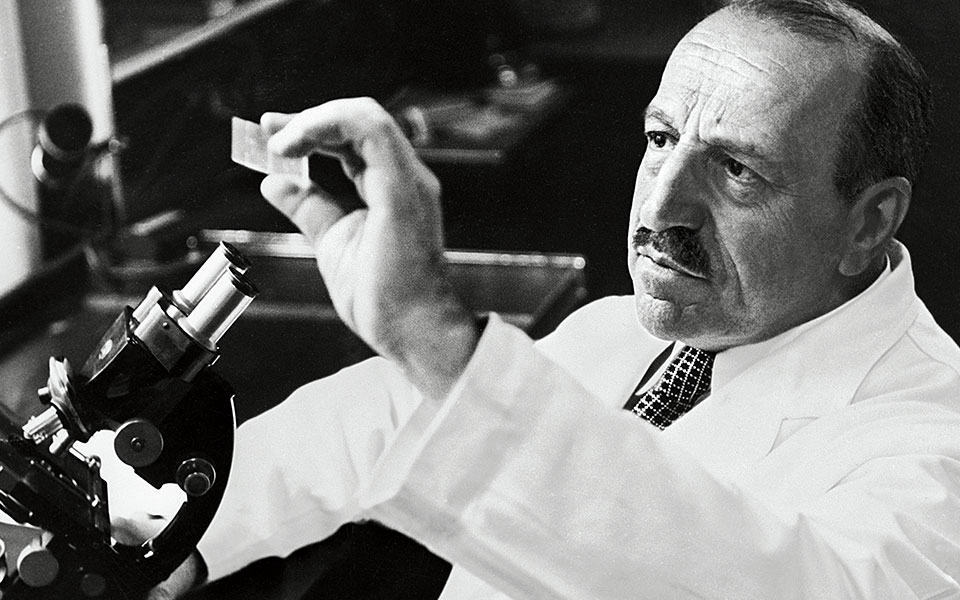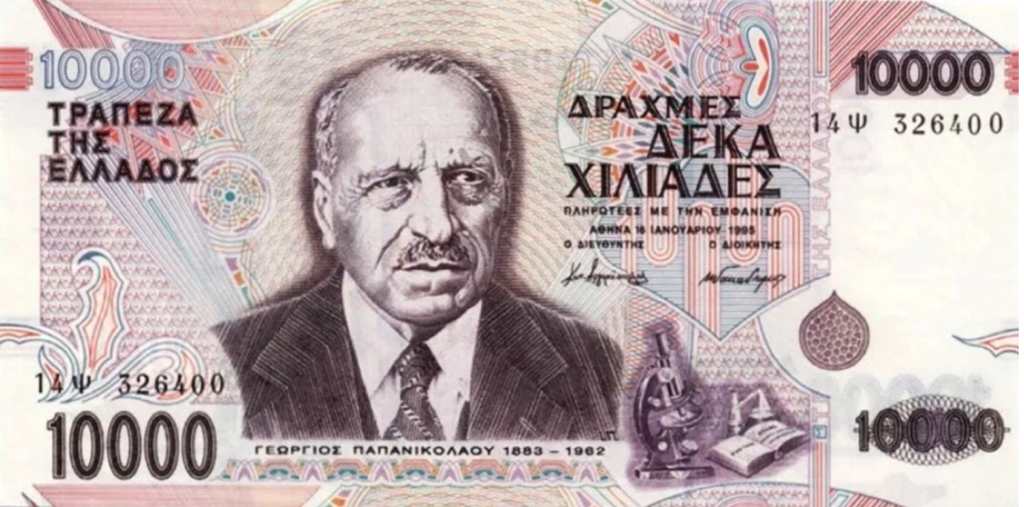
On May 13, 1883, Georgios Papanikolaou, a Greek physician who was a pioneer in cytopathology and invented the revolutionary 'Pap Smear' test, was born in Kimi, Evia.
He is regarded as one of the most brilliant scientific minds of the 20th century.
The Pap Smear Test is the most successful cancer screening technique in history. It revolutionised the early detection of cervical cancer by detecting pre-cancerous cellular changes and has served women extremely well since its inception. It was named after its inventor, Dr. Giorgos Nicolaos Papanicolaou.
Giorgos had three siblings. His father, Nicolaos, was also a doctor. His mother, Maria, loved music and literature.
Young Giorgos entered the University of Athens in 1898 and majored in Music and Humanities. However, his physician father influenced his eventual decision to pursue a career in medicine. In 1904, he graduated from medical school with top honours.
After graduation, Papanicolaou worked in the military as an assistant surgeon for a short time, then returned to his hometown, Kimi. For the next two years, he cared for leprosy patients on the outskirts of his hometown. These outcasts were socially isolated, and Papanicolaou gave them both medical and personal care with compassion and grace.
Shortly thereafter, Papanicolaou married Andromache Mavroyeni (Mary), who was from a famous military family. The young couple returned to Greece following the death of his mother. When the First Balkan War broke out in 1912, Papanicolaou returned to military service as a lieutenant in Greece’s medical corps. However, he became interested in career opportunities in the US and decided to migrate, arriving in New York on October 19, 1913.

In 1914, he finally obtained a position at New York University’s Pathology Department and Cornell University Medical College’s Anatomy Department, where his wife joined him as a technician.
From 1920, he began to focus on the cytopathology of the human reproductive system. He was thrilled when he was able to discern differences between the cytology of normal and malignant cervical cells upon a simple viewing of swabs smeared on microscopic slides. Although his initial publication of the finding in 1928 went largely unnoticed, that year was filled with other happy events for Papanicolaou. He became a US citizen and received a promotion to Assistant Professor at Cornell. As part of his research at the New York Hospital, he collaborated with Dr Herbert Traut, a gynaecological pathologist, eventually publishing their landmark book in 1943, Diagnosis of Uterine Cancer by the Vaginal Smear.
The simple procedure, now famously known as the Pap smear test, quickly became the gold standard in screening for cervical cancer. As it cost little, was easy to perform and could be interpreted accurately, the Pap smear found widespread use and resulted in a significant decline in the incidence of cervical cancer.

In 1951, Papanicolaou became Emeritus Professor at what was then Cornell University Medical College, where two laboratories now bear his name. Shortly thereafter, in 1954, he published Atlas of Exfoliative Cytology, a treatise containing comprehensive information on the cytology of both healthy and diseased tissue, not just in the female reproductive system but also in other organ systems. In total, Papanicolaou authored four books and over one hundred articles. He was the recipient of numerous awards, including honorary degrees from universities in the US, Italy and Greece. The scientific world recognised him with the Borden Award of the Association of American Medical Colleges (1940), the Amory Prize from the American Academy of Arts and Sciences (1947), the prestigious Albert Lasker Award for Clinical Medical Research from the American Public Health Association (1950) and the Medal of Honor from the American Cancer Society (1952). Additionally, he was conferred honorary membership in the Obstetrical and Gynecological Society of Athens and the New York Academy of Sciences.

His image featured on the Greek 10,000-drachma currency note prior to its replacement by the euro and on various Greek stamps.
In 1978, the US Postal Service honoured him with a commemorative 13-cent postage stamp.
This extremely important medical invention by Dr George has helped save millions of women’s lives throughout the years and will continue doing so in the future.
*Source: National Centre for Biotechnology

